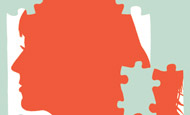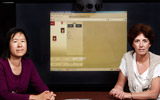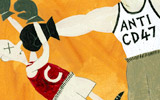
Special Report
Data deluge
MASTERING MEDICINE'S TIDAL WAVE
SUMMER 2012
‘We’ve been so focused on generating hypotheses, but the availability of big data sets allows the data to speak to you. Meaningful things can pop out that you hadn’t expected.’
BACK ISSUES
Online versions of the magazine from 1999 to present are still accessible. BACK ISSUES »


Download Printable Issue (PDF)
Evolution's plucky pisces
To the uninitiated, the threespine stickleback might look like nothing more than a scruffy anchovy with an attitude. But this tough little fish, with its characteristic finny mohawk, is a darling of evolutionary biologists.MORE . . .
Cancer drug redux
A tweak to the structure of the naturally occurring cancer-curing protein interleukin-2 could overcome its major limitation: terrible side effects. It cures many cancers, but it also causes fluid to build up in the lungs and severe difficulty in breathing.MORE . . .
Campaign for Stanford Medicine
Stanford University President John Hennessy in May announced the launch of the $1 billion Campaign for Stanford Medicine, half of which already has been committed.
MORE . . .
Altitude adjustment
“A really nasty hangover” is how Grant Lipman, MD, describes the feeling of acute mountain sickness. So it shouldn’t be surprising that a widely used hangover remedy, ibuprofen, prevents altitude sickness. MORE . . .
Stop lecturing me
Despite dramatic changes in the medical world over the past century, medical education still relies on the traditional lecture format. MORE . . .
Low-cost cancer scan
Tens of thousands of people die needlessly each year in developing countries from mouth cancers that could have been detected early with regular dental checkups. But with fewer than one dentist per 100,000 people in the world’s rural areas, that’s not an option. MORE . . .
Zombies among us
New Stanford research shows that about 3.6 percent of American adults — or around 8.4 million — are prone to sleepwalking.
MORE . . .
Heart-test excess
Left ventriculography, an invasive imaging procedure that measures heart function, is dramatically overused, according to a new Stanford study.
MORE . . .
Letter from the dean
Safeguarding patient data
THE BACKSTORY
Comfy mice















